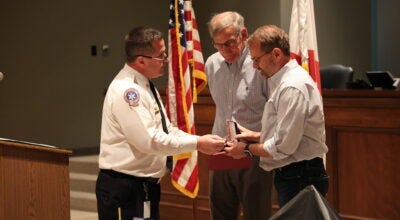Calera adopts new zoning ordinance
Published 9:38 pm Monday, February 15, 2010
The Calera City Council unanimously approved an updated zoning ordinance during its Feb. 15 meeting.
In the new zoning ordinance, which the council has discussed for several months, all townhomes must occupy at least a 60-foot lot, and the acreage requirement for a planned urban development was reduced from 200 acres to 150 acres.
The new zoning ordinance also limits the size of institutional developments, like churches, schools or hospitals, allowed in zoned residential districts, and prohibits mobile homes from being placed in any areas of the city not already zoned for them.
Because the council voted to reduce the planned urban development acreage requirements, they will require developers to present detailed project plans to the city before the council approves the development, council members said previously.
In other business, the council:
— Unanimously approved new city sign regulations. The new regulations will prohibit certain types of signs, like banner-type advertisements.
Through the new regulations, retailers’ allowed sign space will also be determined based on the size of the store.
— Voted unanimously to enter into a $25,000 contract with Ambient Solutions to provide the city’s phone service. The company will replace the city’s current phone provider, BPS Telephone Company, with which the city does not have a contract, Calera Mayor Jon Graham said.
“We need to start looking at a new voice over IP phone system. It’s costing us $21,000 a year in maintenance now,” Graham told the council. “With this new company, it would be $100 to replace a phone instead of the $300 it costs us now.
“I think you’ll find a real value in this proposal,” Graham added.
— Voted unanimously to allow the Calera Police Department to enter into a lease agreement to purchase seven new patrol cars.
Through the lease-to-own program, the city will pay off the vehicles while leasing them over the next three years, said Calera Police Chief Sean Lemley.
“Half of our fleet is over 100,000 miles right now,” Lemley told the council. “Maintenance is killing us.
“Through this plan, we will be able to get the vehicles at one-third the cost,” Lemley added, noting the program will be funded with money brought in by the department’s driving school and a portion of the department’s maintenance fund. “And it will be no additional money to the city.”









